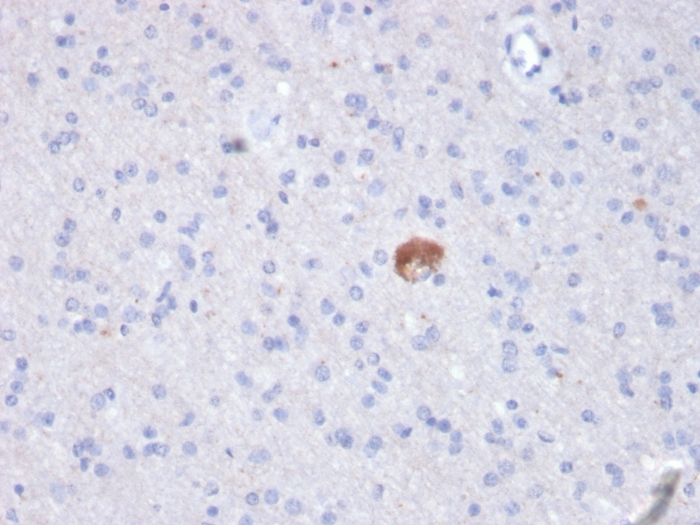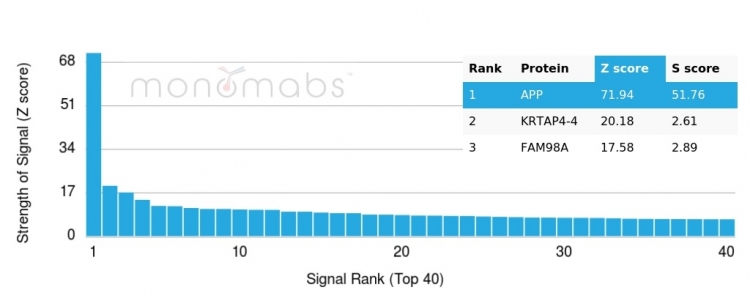Free Shipping in the U.S. for orders over $1000. Shop Now>>

Antibody (APP/3343). Confirmation of Purity and Integrity of SDS-PAGE Analysis of Purified Beta Amyloid Mouse Monoclonal Antibody.

Formalin-fixed, paraffin-embedded human brain stained with Beta Amyloid Mouse Monoclonal Antibody (APP/3343).

Formalin-fixed, paraffin-embedded human brain stained with Beta Amyloid Mouse Monoclonal Antibody (APP/3343).

Analysis of Protein Array containing more than 19,000 full-length human proteins using Beta Amyloid Mouse Monoclonal Antibody (APP/3343). Z- and S- Score: The Z-score represents the strength of a signal that a monoclonal antibody (MAb) (in combination with a fluorescently-tagged anti-IgG secondary antibody) produces when binding to a particular protein on the HuProtTM array. Z-scores are described in units of standard deviations (SD's) above the mean value of all signals generated on that array. If targets on HuProtTM are arranged in descending order of the Z-score, the S-score is the difference (also in units of SD's) between the Z-score. S-score therefore represents the relative target specificity of a MAb to its intended target. A MAb is considered to specific to its intended target, if the MAb has an S-score of at least 2.5. For example, if a MAb binds to protein X with a Z-score of 43 and to protein Y with a Z-score of 14, then the S-score for the binding of that MAb to protein X is equal to 29.
Proteolytic cleavage of the Amyloid protein precursor (APP) gives rise to the 尾-Amyloid and Amyloid A4 proteins, which are present in human platelets. Amyloid deposition is associated with type II diabetes, Down syndrome and a variety of neurological disorders, including Alzheimer s disease. The Amyloid precursor protein (APP) undergoes alternative splicing, resulting in several isoforms. Proteolytic cleavage of APP leads to the formation of the 4 kDa Amyloid 尾/A4 Amyloid protein. This protein is involved in the formation of neurofibrillary tangles and plaques that characterize the senile plaques of Alzheimer s patients. APLP1 (Amyloid precursor-like protein 1) and APLP2 are structurally similar to APP. Human APLP2 is a membrane-bound sperm protein that contains a region highly homologous to the transmembrane-cytoplasmic domains of APP found in brain plaques of Alzheimer s disease patients.
There are no reviews yet.